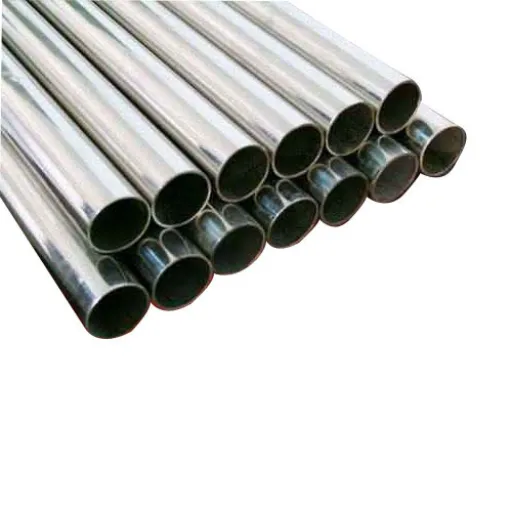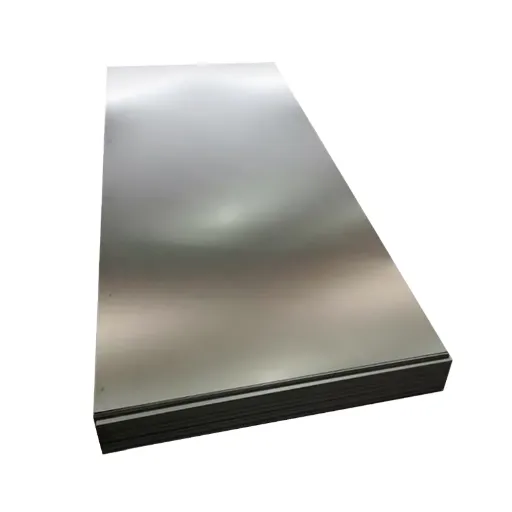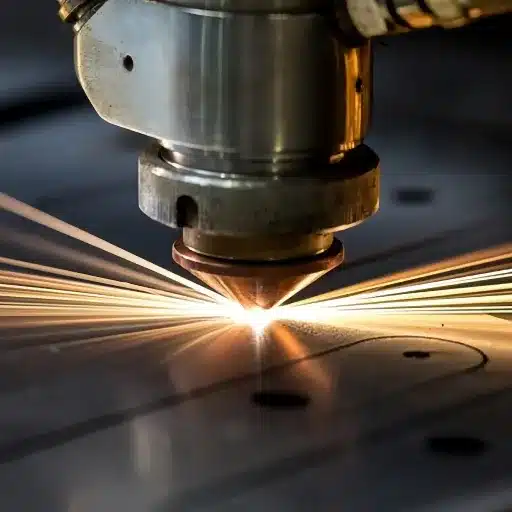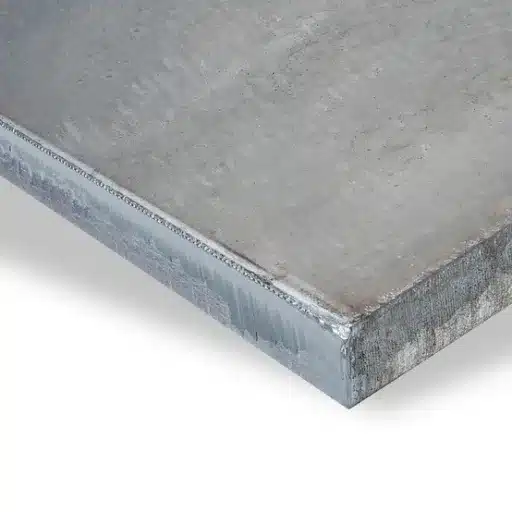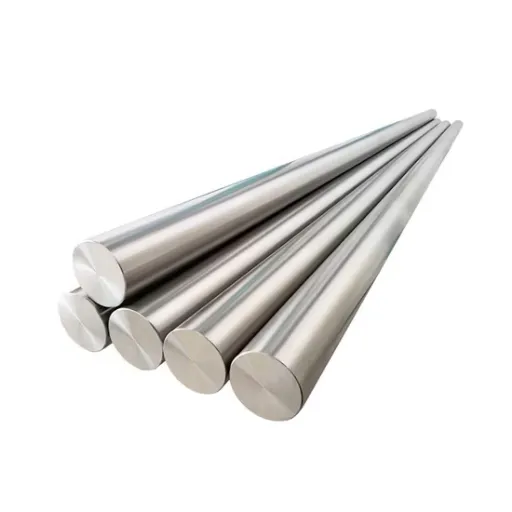So, in deciding on the steels that best fit your needs, consideration must be given to their fundamental differences: A2 and D2 steel. These two widely accepted grades of tool steel each carry a set of distinctive characteristics suitable for one application at the expense of another. Whether you’re a machinist seeking precision, a manufacturer looking for durability, or a hobbyist seeking new materials for a project, understanding how A2 and D2 compare can help you make the best decision. This article will examine the properties, performance, and applications of A2 and D2 steels, providing you with the insight to choose the better option for your tools and projects.
Introduction to Tool Steels
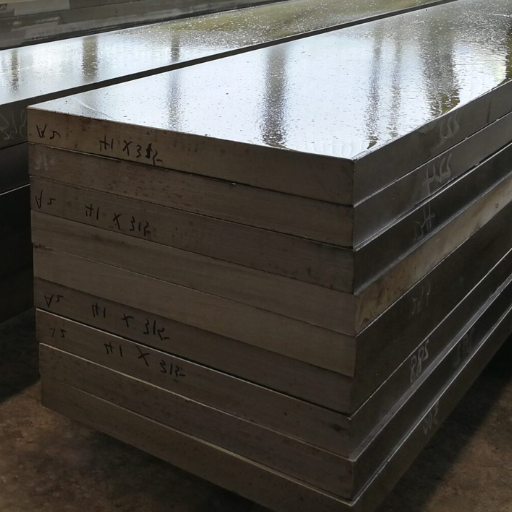
Tool steels are a variant of carbon and alloy steels that are used in the fabrication of tools, dies, and molds. They are hard, depending on their content and temper, and they also resist wear, maintaining good cutting edges. Therefore, they find application in machining and shaping other materials. Tool steels are classified by their composition and properties, such as cold work, hot work, and high-speed applications, as well as their performance under specific conditions. They must withstand extremely high mechanical stresses while meeting the demands of durability and precision.
Definition of Tool Steels
Tool steels are high-alloy steels specially engineered to withstand extremely high mechanical stresses and wear, with significant properties including hardness, durability, and cutting precision for various industrial applications.
Importance in Manufacturing
Tool steels form the backbone of contemporary manufacturing, providing the necessary properties for tools, dies, and molds that operate in an industrial setting. Above all, the special craft of maintaining high hardness and wear resistance, even under the most demanding thermal and mechanical loads, endears them to operations such as cutting, stamping, molding, and extrusion.
According to market research, the global tool steel market generated revenue of nearly $5 billion in 2021 and is expected to continue its upward growth trajectory, driven by increased demand for advanced manufacturing applications. To put sectors dependent on tool steels into perspective, automotive, aerospace, and electronics manufacturing utilize tool steels to manufacture high-precision components with minimal downtime and excellent durability.
Besides, tool steels contribute to the cost-effectiveness of manufacturing. Due to their very high resistance to deformation and toughness, they demand fewer replacements, which saves time and resources. High-speed tool steels, for instance, are primarily used in machining; that is, they maintain operational cutting efficiency at speeds of up to 50,000 RPM while resisting thermal stresses. Furthermore, cold-working tool steels are used to manufacture metal stamping dies for production, ensuring they perform reliably after millions of cycles.
Advances in metallurgy have led to the development of new tool steel grades that incorporate vanadium, tungsten, and molybdenum to enhance further strength and resistance to wear. These innovations embrace the classical paradox of efficiency and durability, placing tool steels at the very heart of modern manufacturing.
Overview of A2 and D2 Tool Steels
Two of the tool steels most commonly utilized in the industry for fabrication purposes, especially where cold working is concerned, are A2 and D2 due to their excellent performance characteristics.
A2 Tool Steel
Being an air-hardening, medium-alloy tool steel, it offers a nearly unique balance between toughness and wear resistance. The chemical composition usually contains 5% chromium and smaller amounts of carbon, molybdenum, and vanadium. This combination of alloying elements results in better machinability for A2 compared to other very-high-alloy steels, making it the preferred grade for applications requiring a high degree of precision. The steel is given a final hardness of approximately 57 to 62 HRC following heat treatment, being most commonly utilized for dies, punches, and forming tools. Therefore, even though it is tough, the level of wear resistance in A2 is less compared to D2, placing it primarily where shock loading or impact comes into play.
D2 Tool Steel
D2, by contrast, is a carbon-chromium tool steel reputed for its extensive wear resistance and extreme hardness. With its chromium content at approximately 12% and a carbon content generally higher than 1.5%, D2 aims to achieve utmost hardness with fair toughness. Depending upon the particular use it is forged for, the hardness from heat treatment of this steel falls between 58 and 64 HRC. Such excellent resistance to wear makes it ideally suited for long-term use in creating tools such as blanking dies, shear blades, and knurling tools. However, its reduced toughness compared to A2 makes D2 less suitable for high-impact or shock-prone applications.
Comparison and Applications
A2 tool steel, being highly shock-resistant and easy to machine, is often found in uses such as molds and forming dies. The toughness inhibits chipping or cracking when subjected to repeated impacts. D2, on the other hand, is particularly suited for environments where abrasive wear occurs and prolonged edge retention and surface performance are crucial. Based on the requirements of specific applications, many industries utilize the two steel grades.
With metallurgical advances, A2 and D2 continue to be developed to exhibit superior performance and durability in response to current production demands.
A2 Steel Overview
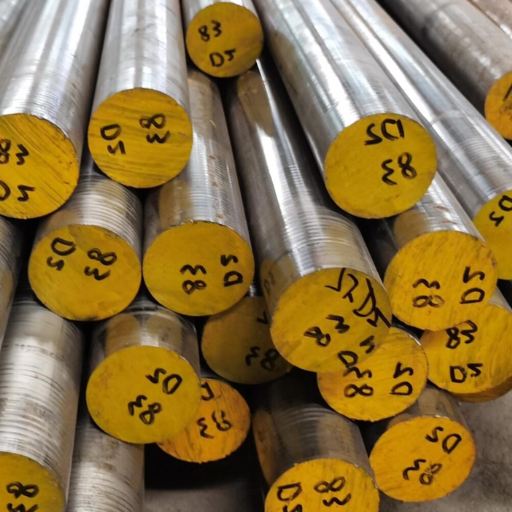
A2 steel is a general-purpose air-hardening type of tool steel used in applications requiring a balance between toughness and wear resistance. Containing a moderate percentage of carbon and chromium, which contribute to its ability to resist wear and maintain a cutting edge, A2 steel finds application in forming punches, dies, and blades, as it requires high deformation resistance and good performance under repeated stress. Additionally, it offers machinability and ease of heat treatment for specific industrial applications.
Chemical Composition of A2 Steel
A2 steel is commonly considered to have 1.0% carbon, 5.0% chromium, 1.0% molybdenum, 0.3% manganese, 0.3% vanadium, and traces of sulfur. It is this composition that gives it a pleasing combination of hardness, toughness, and resistance to wear.
Mechanical Properties of A2 Steel
A2 steel is always appreciated for its balance of strength, hardness, and toughness, making it a versatile grade suitable for various industrial applications. The mechanical properties of A2 steel are determined by its chemical composition and heat treatment processes. A list of key mechanical properties thus follows:
- Hardness: Proper heat treatment will get A2 steel to peak between 57 and 62 HRC (Rockwell C), which is ideal for wear-resistant and durable applications.
- Tensile Strength: It is reported that A2 steel has a tensile strength of approximately 1,800 MPa after hardening, positioning it in the category of superior-performing steels under high loads and stresses.
- Compressive Strength: A2 has good compressive strength, making it suitable for tooling where heavy impacts and high pressure are involved.
- Toughness: It offers a fairly challenging nature for a tool steel, resulting in fewer chances of cracking or chipping under impact-heavy or repetitive use.
- Wear Resistance: With its high chromium content, A2 steel exhibits excellent wear resistance, which makes it well-suited for use as a cutting tool or in applications such as punches and dies.
- Dimensional Stability: With excellent dimensional stability against distortion during heat treatment processes, A2 does offer precision in manufacturing and machining processes.
Coupled with its machinability and heat treatability, these properties make A2 a reliable material for use in cutting tools, molds, dies, and industrial parts in high-performance applications.
Benefits of Using A2 Steel
- High Wear Resistance
Traditionally high in chromium, A2 steel exhibits exceptional wear resistance and is therefore suited for prolonged use in demanding applications, such as industrial tooling and dies.
- Exceptional Toughness
A2’s composition strikes a balance between hardness and toughness, ensuring that heavy impacts and mechanical stresses do not cause it to crack or chip.
- Dimensional Stability
A2 steel maintains its shape and precision during heat treatment, with low chances of warping or dimensional distortion, making it suitable for jobs with very tight tolerances.
- Ease of Heat Treatment
A2 steel is easy to heat treat because its hardening process is comparatively simple, therefore saving manufacturing time and cost.
- Corrosion Resistance
Although it is not truly stainless steel, A2 steel is more rust- and corrosion-resistant than other non-stainless tool steels, thereby rendering it more durable and long-lasting in both dry and semi-humid atmospheres.
D2 Steel Overview
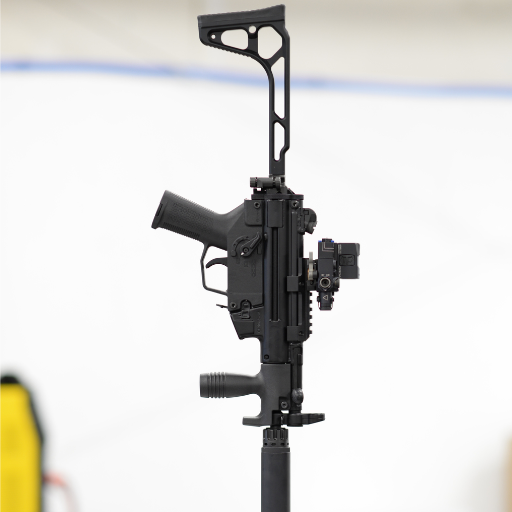
It is a high-carbon, high-chromium tool steel, similar to D2, which is extremely hard and highly resistant to wear. Considered one of the most resilient tool steels, it finds its best uses where everlasting sharpness and edge retention are needed. With a reasonably high chromium level, the steel also exhibits moderate corrosion resistance, allowing it to function suitably in less rigorous environments. Due to its edge-holding and abrasion-resistant capabilities, D2 steel finds numerous applications in cutting tools, dies, and parts for industrial machinery.
Chemical Composition of D2 Steel
D2 steel is a highly refined tool steel with a fixed composition, allowing it to attain extraordinary levels of hardness, wear resistance, and durability. The following is a detailed analysis of the key element content in D2 steel:
- Carbon (C): 1.40% to 1.60%
The high carbon content in D2 steel contributes to its hardness and helps maintain its sharpness for a more extended period during use.
- Chromium (Cr): 11.00% to 13.00%
Chromium significantly enhances the wear resistance, corrosion resistance, and overall durability of steel. Due to its high chromium content, D2 steel is often referred to as a semi-stainless steel.
- Molybdenum (Mo): 0.70% to 1.20%
Molybdenum imparts toughness to the steel, making it resistant to chipping and stronger at high operating temperatures.
- Vanadium (V): 0.10% to 1.00%
Vanadium enhances wear resistance and refines the grain structure, thereby improving toughness and edge retention.
- Manganese (Mn): 0.10% to 0.60%
Assists in hardenability and adds to the strength.
- Silicon (Si): 0.10% to 0.60%
Silicon contributes to the strength and elasticity of materials during manufacturing and under stress.
- Phosphorus (P) and Sulfur (S): ≤0.03% each
Were kept below levels to avoid brittleness and to maintain ductility.
The precise balance of these elements imbues D2 steel with its unique set of qualities, thus making it a material of choice for applications that require exceptional wear resistance, edge retention, and medium corrosion resistance. The combination of carbon with chromium becomes very useful while making sure that the edge can stand wear and tear for a considerable time when performing challenging jobs.
Mechanical Properties of D2 Steel
D2 steel is widely applied and admired for its mechanical attributes. The following are its main mechanical properties, followed by descriptions:
- Hardness: Appropriate heat treatment leads to a Rockwell hardness of 55-62 HRC for the steel. This hardness provides excellent wear resistance and edge retention, making the steel suitable for applications such as cutting tools, dies, or knives.
- Tensile Strength: It varies from 2000 to 2300 MPa, depending on heat treatment. Such strength is sufficient for the material to endure immense force before deformation.
- Compressive Strength: It is primarily worked under conditions subject to impacts and stress, providing excellent compressive strength.
- Toughness: Due to its high carbon content, toughness is slightly reduced compared to other low-alloy steels. However, in properly tempered conditions, it provides good impact resistance in many applications.
- Wear Resistance: High chromium and carbon content yield a large quantity of carbides, providing excellent wear resistance in abrasive environments. Hence, it proves its standing with exceptional durability.
- Corrosion Resistance: So an excellent semi-stainless steel, it holds almost 12% chromium. It’s not an outright stainless steel, but this composition provides good corrosion resistance to some extent when exposed to moisture or fairly mild environment.
- Machinability: D2 steel is considered the best machining steel, but it presents challenges that can be overcome with precise tooling and methods. Bainitic hardening and stress relieving before machining are recommended.
With such properties, the steel is primarily used for making cutting dies, precision tools, industrial knives, punches, and other components that are highly wear-prone. Detailed knowledge of its mechanical behavior aids in the proper design and application in critical industries.
Benefits of Using D2 Steel
- High Wear Resistance
High carbon content and chromium, coupled with these properties, are what grant D2 steel its excellent wear resistance, making it an ideal application for repeated abrasion or friction. It increases the lifespan of tools and components, thereby reducing down the maintenance and replacement cost.
- Extraordinary Hardness and Strength
D2 steel achieves a Rockwell hardness of up to 60 HRC through heat treatment, ensuring the optimal hardness and strength it can offer. It holds its edge and integrity under heavy loads and high-pressure environments, making it suited for the harsh conditions of industrial environments.
- Corrosion Resistance
Chrome contributes to corrosion resistance in this steel, the 12% amount of chromium gives it corrosion resistance over normal carbon steels. It is not fully stainless, but under limited exposure to moisture or corrosive elements, it performs well.
- Dimensional Stability
This steel material undergoes very slight deformation during heat treatment, which enhances its characteristics of high wear resistance and carbide structures, making it very stable in dimension. Therefore, finishing tools from D2 are preferred for delicate components that require tight tolerances.
- Versatility in Its Applications
The aforementioned properties of D2 steel make it a versatile steel in various sectors. It is highly prized by the manufacture of cutting dies, shearing blades, punches, and extrusion tools for the automotive, aerospace, and other industries where highest levels of precision and serviceability are expected.
A2 vs D2: Key Comparisons
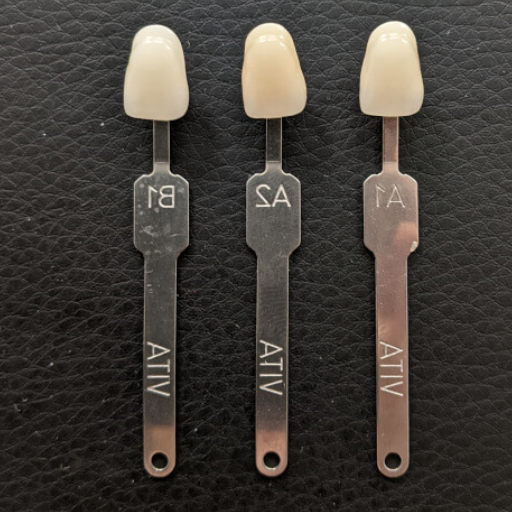
| Key Point | A2 Tool Steel | D2 Tool Steel |
|---|---|---|
| Hardness | 57-62 HRC | 58-64 HRC |
| Wear Resistance | Moderate | Superior |
| Toughness | High | Moderate |
| Corrosion Resistance | Moderate | Good |
| Machinability | Better | Moderate |
| Heat Treatment | Simpler, less distortion | Complex, prone to distortion |
| Edge Retention | Good | Excellent |
| Cost | Less expensive | More expensive |
| Applications | Dies, molds, forming tools | Punches, blades, high-wear tools |
| Best For | Shock resistance, moderate wear | High wear, edge retention |
Machinability of A2 and D2 Steel
A2 and D2 steels have similar machinability but differ in ease of use and end-use requirements. A2 steel is generally considered a better mashinable option than D2 owing to its lower carbide content. Hence, it is preferred in grind-heavy applications that require less tool wear and higher cutting speed. It is said that A2 steel has a machinability rating of about 65% compared to free machining steels, making it easier to work with than some other tool steels.
D2 steel, with its high chromium and carbon content, is difficult to machine. Its high wear resistance and hardness lead to increased tooling wear during machining operations. D2 steel is rated at about 30-40% of free machining steel on the machinability scale, thereby requiring reduced cut speeds and special tools or coatings, such as carbide or polycrystalline diamond (PCD), to maintain machining precision and efficiency.
For the proper machining of both steels, adequate cooling or lubrication becomes imperative to control heat and enhance tool life. Modern CNC machining technology, combined with coated cutting tools, finds wide application in meeting the strict requirements imposed by these materials and achieving end-use dimensional tolerances.
Cold Work Applications
A cold work application involves forming, cutting, or shaping materials at or near room temperature, thereby enhancing physical properties related to hardness and strength. Five classes of cold work and their details are given hereunder:
- Stamping
The industry is stamping in the automotive and electronics sectors to impart complex shapes to sheet metal. The process involves punching, bending, and embossing, with the option of using high-speed stamping machines for mass production.
- Drawing
Drawing is a technique for making wires, bars, and tubes. The drawing operation involves pulling the metal through the die, which reduces its cross-section without changing its length. In the process, the tensile strength and surface finish are improved.
- Cold Rolling
Cold rolling is for metal sheets and strips with good finishes and close tolerances. Usually, steel and aluminum are cold-rolled and then are used for appliances, roofing, and automotive components.
- Cold Forging
Cold forging produces precision components, such as bolts and screws, by exerting compressive force on metal with minimal heat application. It enhances dimensional accuracy and mechanical properties, thereby reducing the need for secondary operations.
- Cold Extrusion
Cold extrusion manufactures seamless hollow or solid parts through high strength and close tolerances. It is widely used for aluminum or steel parts for the aerospace and automotive industries.
These cold working processes are carried out in varied industrial sectors to obtain the desired mechanical and aesthetic properties of the material.
Durability and Wear Resistance
Durability and wear resistance are significant in material engineering when applications require a long service life under harsh conditions. These are attributes by which materials resist mechanical wear, corrosion, and environmental degradation, all while retaining their functionality. Below we note five important considerations and points of data in the context of durability and wear resistance:
- Material Hardness
The more complex a material, the better it resists wear. For instance, tungsten carbide has a hardness value of approximately 1500 HV (Vickers Hardness), making it very suitable for cutting tools.
- Corrosion Resistance
This stainless steel with chromium content renders it utterly resistant to rust and corrosion, making it perfect for the marine and chemical industries.
- Surface Coating
Methods such as PVD (Physical Vapor Deposition) can impart a protective layer on materials. For instance, a TiN (titanium nitride) coating may increase the wear resistance of cutting tools by up to 5 times.
- Fatigue Strength
Metals with high fatigue strength, such as titanium alloys, maintain their durability under repeated loading. Titanium Grade 5 (Ti-6Al-4V) has a fatigue limit of approximately 550 MPa and is widely used in aerospace applications.
- Thermal Stability
Materials like ceramics and superalloys exhibit resistance to temperature increases with respect to their properties. For example, nickel-based superalloys such as Inconel 718 remain wear-resistant even at temperatures above 700°C, making them suitable for turbine blades.
These properties and corresponding data establish how durability and resistance to wear must be enhanced so that modern industries can meet the demands of their providers.
Use Cases for A2 and D2 Tool Steels
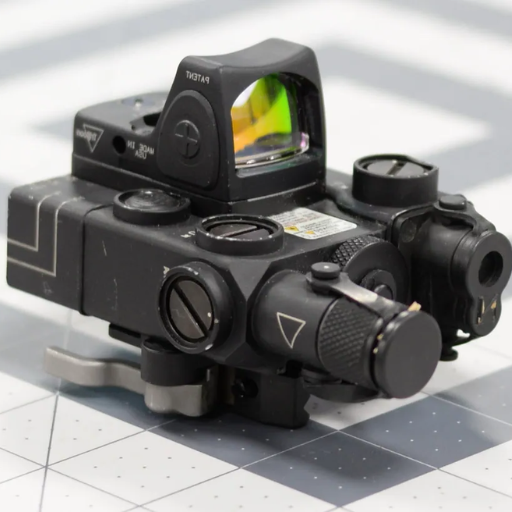
| Use Case | A2 Tool Steel | D2 Tool Steel |
|---|---|---|
| Cutting Tools | Knives, reamers, chisels | Shear blades, slitters, knives |
| Punches and Dies | Moderate impact punches, forming dies | Heavy-duty stamping, die-cutting |
| Molds | Low-volume production molds | High-volume production molds |
| Wear Resistance Tools | Moderate wear resistance tools | Extreme wear resistance tools |
| Forming Tools | Stamping, extrusion tools | Abrasive machining tools |
| Edge Retention | Good edge retention | Excellent edge retention |
| Shock Resistance | High shock resistance | Lower shock resistance |
| High-Stress Applications | Tools under impact or stress | Tools in high-abrasion environments |
Common Applications of A2 Steel
A2 steel is a fashion-resistant air-hardening tool steel that balances toughness against wear resistance and is thus useful in a variety of challenging applications. Here 5 applications of A2 steel:
- Punches and Dies
Its ability to resist toughness and abrasiveness makes it frequently used to make punches and dies for metal stamping operations. It withstands repeated chipping due to impact.
- Blanking Tools
A2 steel is used for blanking and shearing tools because it withstands the repeated stress of cutting metals without losing its edge due to high wear resistance.
- Forming Tools
A2 steel is suitable for forming tools in operations where precision and durability are paramount. It resists deformation, allowing materials to be formed consistently through lengthy production runs.
- Plastic Molds
High wear resistance and high polishability generally make it a preferred steel for plastic mold applications. It offers durability and precision molding for fine detail molds.
- Industrial Knives and Blades
A2 steel is widely used for manufacturing industrial cutting blades. The excellent retention of the edge and impact resistance makes these tools work well in cutting a bunch of materials like paper, plastics, and metals.
Common Applications of D2 Steel
- Tool and Die Making
D2 steel is used for tool and die manufacturing because it has a high hardness, good wear resistance, and good dimensional stability. It keeps an edge well, resists repetitive impacts, and is suitable for making tools for stamping dies and forming operations.
- Shear Blades
The D2 steel is used for making shear blades that cut sheet metals and other hard materials due to its excellent edge retention. The blades are designed for use in high-pressure situations where utmost precision is paramount throughout their working life.
- Punches and Press Tools
High compressive strength of D2 steel provides it with superiority in being used for punches and press tools. Such tools essentially require materials that can withstand immense pressures without deformation, and D2 steel is well-suited for the job.
- Plastic Molds
With its excellent wear resistance and ability to be polished into a fine finish, D2 steel is the ideal choice for plastic molds. It is able to resist abrasive wear and withstand high operating cycles, providing a long life and maintaining consistent mold accuracy.
- Industrial Knives
Industrial knives made of D2 are extensively employed in the food processing industry, wood cutting, and packaging. Due to their extreme hardness and wear resistance, these knives perform well for an extended period in harsh conditions.
Choosing the Right Tool Steel for Your Project
While selecting a tool steel for the project, my considerations are based on the working criteria of the operation. Wear, optimized for resistance, toughness, and tool-use environmental conditions, is a factor considered. Where there is heavy wear and resistance to it, a grade of steel such as D2 is ideal due to its hardness and durability. But for impact resistance, the requirement usually calls for choosing a tougher steel grade for all-around serviceability. When I understand the trade-off between these properties, I can select a material that responds faithfully and efficiently.
References
- Mechanical Characterization of A2 and D2 Tool Steels by Nanoindentation
This study examines the mechanical properties of A2 and D2 tool steels, with a focus on their reliability and failure mechanisms.
Read the paper here - Peak Strength, Strain Hardening, and Dynamic Restoration of A2 and M2 Tool Steels in Hot Deformation
This research examines the deformation behavior of A2 tool steel, comparing it with M2 steel, and provides insights into their carbide compositions.
Read the article here - Comparison of Wear Properties of Tool Steels AISI D2 and O1 with the Same Hardness
This paper compares the wear resistance of D2 tool steel with other tool steels, offering valuable insights into its performance in abrasive conditions.
Read the article here
Frequently Asked Questions (FAQ)
What is the difference between A2 tool steel and D2 tool steel properties?
A2 tool steel is renowned for its exceptional toughness and wear resistance, while D2 tool steel boasts high hardness and abrasion resistance. A2 has slightly lower carbon content compared to D2, which contributes to its superior toughness. D2, on the other hand, is more brittle but provides better edge retention, making it suitable for applications that require high wear resistance.
How does heat treatment affect A2 and D2 tool steels?
Both A2 and D2 tool steels undergo heat treatment to enhance their mechanical properties. A2 is typically air-hardened, which allows for minimal distortion during the hardening process. D2, being a high-carbon and chromium alloy, also benefits from heat treatment but requires careful monitoring to achieve optimal hardness without compromising toughness.
Is A2 steel preferable to O1 tool steel?
A2 steel is often considered preferable to O1 tool steel for applications that require better stability during heat treatment and minimal distortion. While O1 offers good machinability and edge retention, A2 provides a better balance of toughness and wear resistance, making it more suitable for tooling applications.
What are the machinable characteristics of A2 vs D2 tool steels?
A2 tool steel is generally easier to machine compared to D2 due to its lower hardness levels after heat treatment. However, D2 tool steel can be machined effectively with the right tools and techniques, especially when used for high precision applications like forming dies and cutting tools.
What applications are best suited for D2 tool steel?
D2 tool steel is best suited for applications requiring high wear resistance and the ability to retain a sharp edge, such as in blanking dies, shear blades, and knife blades. Its high carbon content gives it the necessary hardness for these demanding tasks.
How does the chemical composition of A2 and D2 differ?
The chemical composition of A2 tool steel includes carbon, chromium, and molybdenum, which contributes to its properties of toughness and wear resistance. D2 tool steel, on the other hand, has a higher chromium content along with carbon, which enhances its hardness and abrasion resistance but can make it less tough compared to A2.
What is the significance of toughness and wear resistance in A2 and D2 tool steels?
Toughness and wear resistance are critical mechanical properties in tool steels. A2 offers a good balance of both, making it suitable for applications where shock resistance is essential. D2 excels in wear resistance, making it ideal for cutting and stamping applications but may sacrifice some toughness in the process.
Can A2 and D2 tool steels be used interchangeably?
While A2 and D2 tool steels can be used for similar applications, they are not entirely interchangeable due to their differing properties. A2 is preferable for applications requiring toughness and minimal distortion, while D2 is better suited for scenarios needing high hardness and abrasion resistance. It is important to choose the steel based on specific application requirements.

